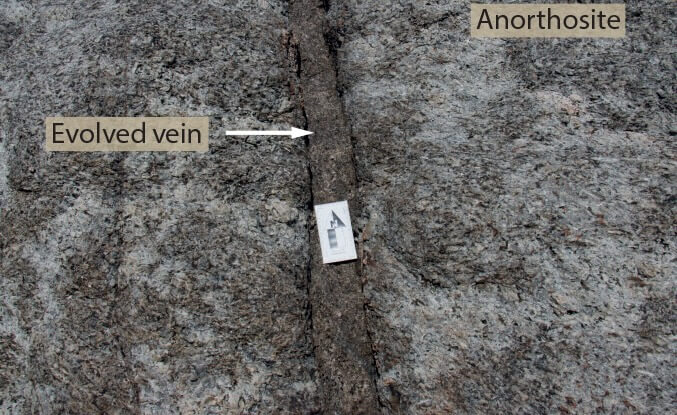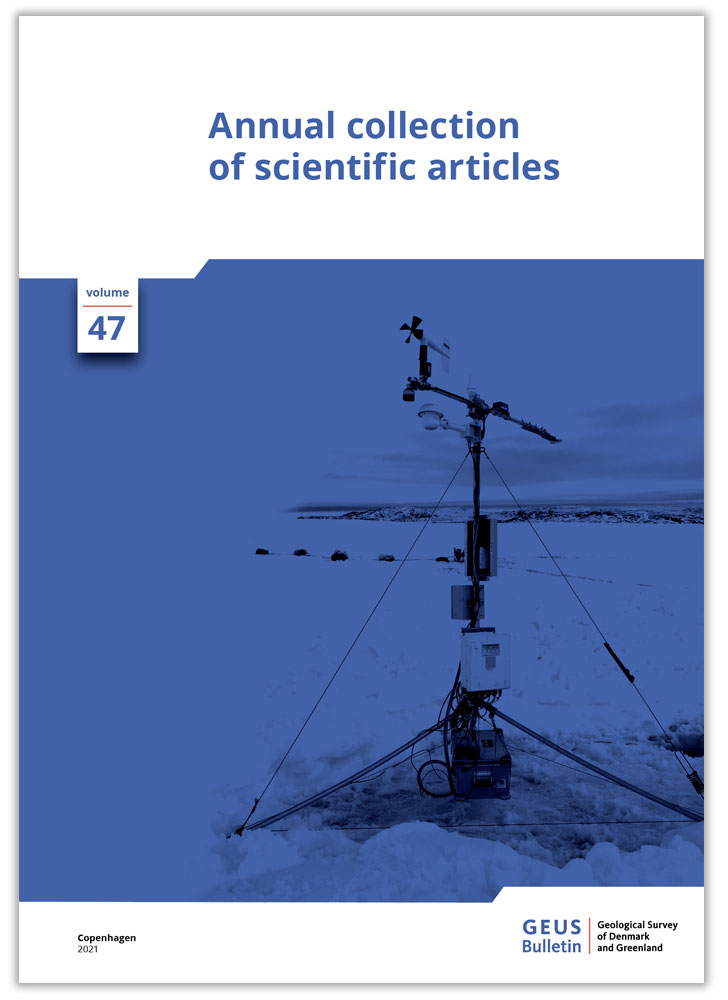
How to Cite
Share
Abstract
The Gardar Province of south Greenland is defined by the products of alkaline igneous magmatism during the Mesoproterozoic. The most laterally extensive Gardar intrusions are a series of giant dyke complexes best exposed on the Tuttutooq archipelago. We present new field observations and a geological map of north-east Tuttutooq island that provide fresh insights into the temporal evolution of the Younger giant dyke complex and two associated ultramafic lamprophyres. Our data demonstrate that distinctive crystallisation regimes occurred in different sectors of the dyke complex, leading to the formation of marginal gabbros and ovoid pod-like domains displaying lamination, modal layering and/or more evolved differentiates. We infer that at least two pulses of magma contributed to the formation of the Younger giant dyke complex. In addition, the relative ages of two ultramafic lamprophyre diatremes are constrained and attributed to two distinct phases of rifting in the Gardar Province.
How to Cite
Share
Copyright (c) 2021 Lot Koopmans, Robert A. Webster, Rory Changleng, Lucy Mathieson, Alasdair J. Murphy, Adrian A. Finch, William McCarthy

This work is licensed under a Creative Commons Attribution 4.0 International License.
Supplementary Files
Funding
LK, RW, RC, LM and AM received funding from the Mining Institute of Scotland, Institute of Materials, Minerals and Mining, the Edinburgh Geological Society, the Augustine Courtauld Trust and the Scott Polar Research Institute. LK received funding from the Society of Economic Geology Hickok-Radford Fund.Downloads
An annual collection of articles submitted to GEUS Bulletin, published throughout 2021.
Cover photo: Wehrlé et al. 2022 (DOI:10.34194/geusb.v47.5284).
References
-
Blaxland, A.B., Van Breemen, O., Emeleus, C.H. & Anderson, J.G. 1978: Age and origin of the major syenite centers in the Gardar province of south Greenland: Rb-Sr studies. Bulletin of the Geological Society of America 89(2), 231–244. https://doi.org/10.1130/0016-7606(1978)89<231:AAOOTM>2.0.CO;2
-
Cashman, K.V. & Giordano, G. 2014: Calderas and magma reservoirs. Journal of Volcanology and Geothermal Research 288, 28–45. https://doi.org/10.1016/j.jvolgeores.2014.09.007
-
Irvine, T. 1980: Magmatic density currents and cumulus processes. American Journal of Science 280(A), 1–58.
-
Rosa, D., Sandrin, A., Nielsen, T.F.D. & Vesturklett, H. 2020: Petrography, geochemistry and magnetic susceptibility of the Isortoq fe-ti-v deposit, Isortoq Giant Dykes, South Greenland. GEUS Bulletin 44, 1–8. https://doi.org/10.34194/geusb.v44.4626
-
Upton, B.G. 2013: Tectono-magmatic evolution of the younger Gardar southern rift, South Greenland. Geological Survey of Denmark and Greenland Bulletin 29, 1–24. https://doi.org/10.34194/geusb.v29.4692
-
Upton, B.G.J. 1962: Geology of Tugtutoq and neighbouring islands, South Greenland, Part 1. Meddelelser Om Gronland 169(8), 1–60.
-
Upton, B.G.J., Craven, J.A. & Kirstein, L.A. 2006: Crystallisation of mela-aillikites of the Narsaq region, Gardar alkaline province, South Greenland and relationships to other aillikitic-carbonatitic associations in the province. Lithos 92(1–2), 300–319. https://doi.org/10.1016/j.lithos.2006.03.046
-
Upton, B.G.J., Emeleus, C.H., Heaman, L.M., Goodenough, K.M. & Finch, A.A. 2003: Magmatism of the mid-Proterozoic Gardar Province, South Greenland: Chronology, petrogenesis and geological setting. Lithos 68(1–2), 43–65. https://doi.org/10.1016/S0024-4937(03)00030-6
-
Upton, B.G.J. & Thomas, J.E. 1980: The Tugtutôq Younger Giant Dyke Complex, South Greenland: Fractional crystallization of transitional olivine basalt magma. Journal of Petrology 21(1), 167–198. https://doi.org/10.1093/petrology/21.1.167
-
Waight, T., Baker, J. & Willigers, B. 2002: Rb isotope dilution analyses by MC-ICPMS using Zr to correct for mass fractionation: towards improved Rb–Sr geochronology? Chemical Geology 186(1–2), 99–116. https://doi.org/10.1016/S0009-2541(01)00420-X









